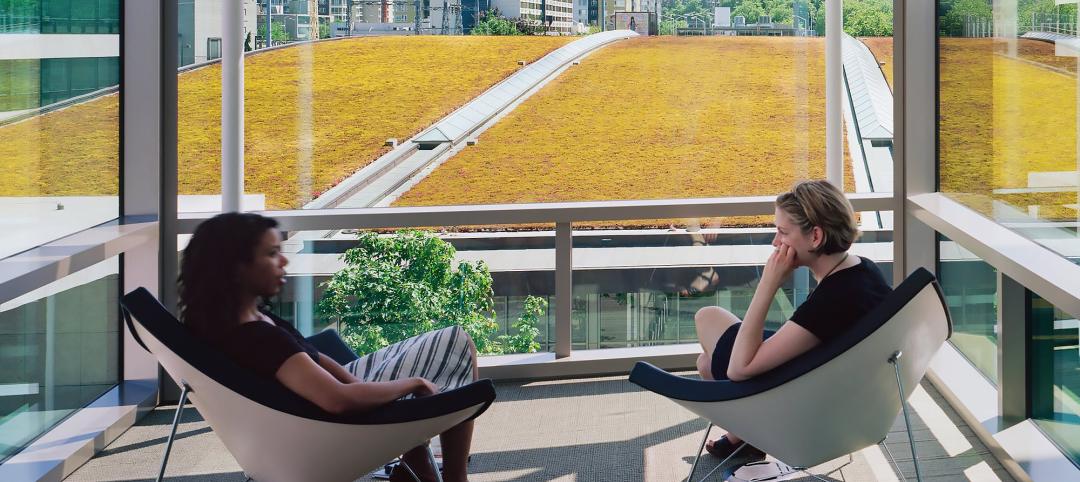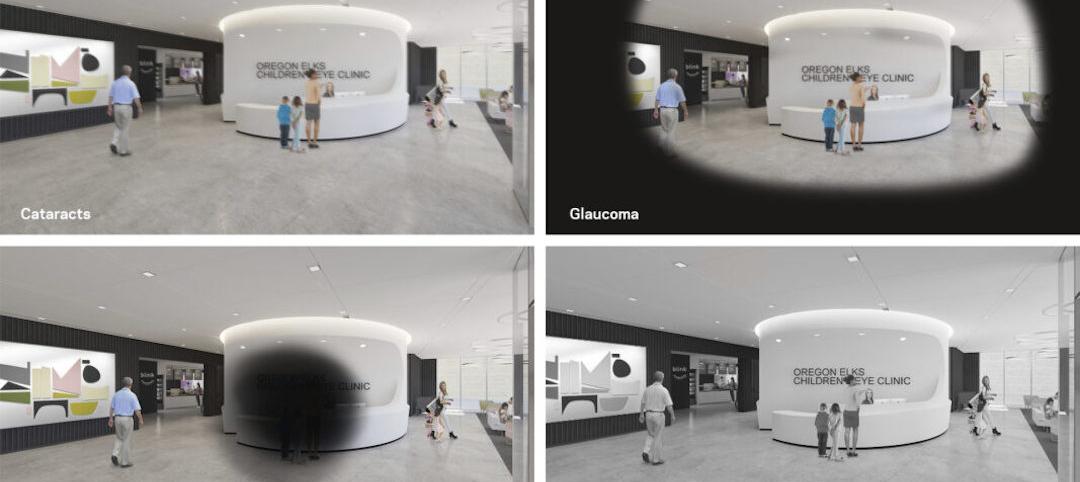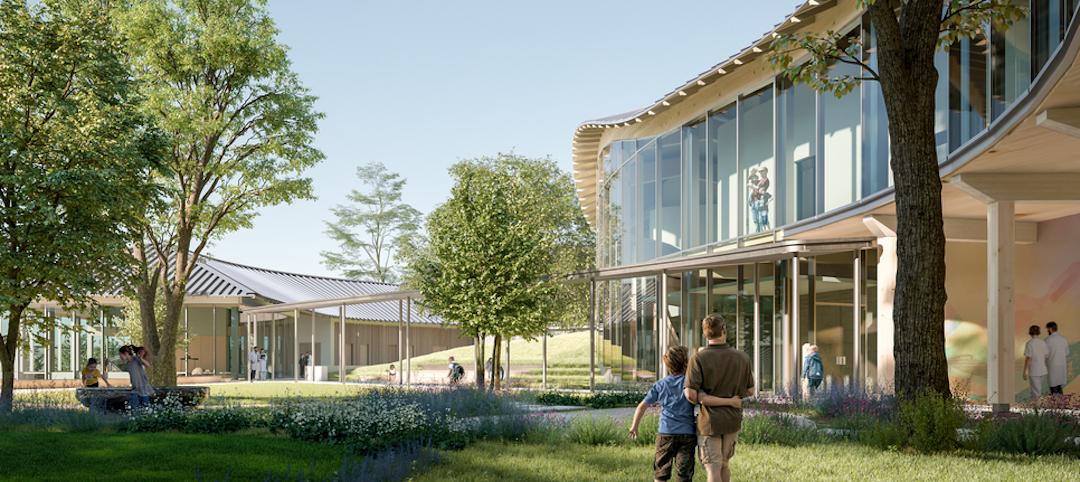COVID-19 illuminates the world to many pitfalls in current workplace design. Issues of density, location and balance have been laid wide open for all to attack. That’s a good thing. But in the ensuing conversation, are emerging ideas actually more regressive?
During a time of unknown, humans desperately want answers. When we’re inundated with information and anxious about the world around us, we often look for quick solutions. We also miss long-standing cues, touting reactions as fresh ideas instead of acknowledging them as changes that should have already occurred (look no further than the 35-year notion of biophilia). But more dangerously, we can generate solutions without considering what makes us who we are: human. As this unfortunate crisis fuels a long-needed conversation about where and how work is done, I’m most wary of ideas that celebrate the expected to the detriment of those doing their jobs.
Below are predictions made from a reactionary mindset, coupled with realities that have been in front of businesses for some time. These positions are countered by responses that, instead of holding our working society back, seek to pull it toward lasting results.
7 choices for work environments that underscore the need to respond, not react
Reaction: We will need to de-densify
Reality: Employees have already made this decision
Yes, fewer people with greater distance in-between means less likelihood of spreading or contracting disease. But we’ve known the implications of density on holistic human health since the industrial revolution. It’s no coincidence that as the number of square feet per person has decreased in an office, so has floor efficiency as more people work remotely due to these conditions. For the last 15+ years, technology has enabled workers to vote with their feet to create “preferred density.”
There’s a strong desire to solve problems with concrete measures like physical space metrics and basic division (overall square feet divided by total population). However, this challenge seems better suited for organizational strategies that align work modes with the proper environments to support them. It’s beyond simply offering the chance to work from home – it also means not designing ubiquitous spaces that try to be everything to everyone, an aspect of the “open office” that many despise. This attitude will allow companies to reduce the number of people in a space at one time (less density) while increasing the number of employees a space serves (more use). The resulting choreography should increase job satisfaction while reducing congestion on the road or on public transit, an outcome our planet and nervous systems would greatly appreciate.
Reaction: We will need a six foot physical boundary around us
Reality: People will return to the office to overcome barriers, not to create them
In addition to reducing density, establishing physical separation between people is being advocated through the return of the protective cubicle (sneeze guard included). As much as my engineering mind loves games like Tetris, repeatable system layouts that drive how people do their work are rarely the right place to start. And what are the correct dimensions? Testing is showing just how variable the range of a virus can be.
It’s not necessarily a coincidence that when the movie Office Space appeared, cubicles nearly disappeared. Cubicles are isolating and demoralizing, they block light and view, and most use porous acoustic material (aka virus breeding grounds). Why come to an office for that? I hope that before putting this solution into action, we fully understand the risk of adding these anachronisms to our offices – and then landfills – again.
Reaction: We can fuse social interaction and isolation into one space
Reality: It’s impossible to go against our hard-wired brains
There are suggestions that we should build workplaces that enable us to be together and yet apart. Is the office of the future the awkward middle school dance of my past? Or will it be a game of tag, where we can’t help but try to guess who’s “it” – an outcome that soberly could lead to inadvertent discrimination.
We all appreciate the importance of engaging others in our personal and professional lives, especially now. With that comes the beautifully organic, somewhat unpredictable means of interaction. As a result, there will always be pinch points. Visit any grocery store now to feel this in full effect. At the height of this crisis, even strangers are challenged to respect mandated personal space. Although spatial configuration, RFID mapping, and visual cues may offer a quick but uncomfortable solution, advanced health screening and progressive quarantine protocols should provide greater confidence in our interactions. This trust-based attribute is important to team risk-taking and creativity. It’s also more inclusive for those with impairments.
Reaction: We must limit our sharing of technology, and potentially, space
Reality: Nobody wanted to use someone else’s keyboard anyway
Reducing the transfer of communicable disease through what we touch is important, but let’s be honest, sharing work supplies is almost as bad as getting the warm chair in a conference room. Although I hope the share economy continues in many forms, “hot-desking” has forced a bigger conversation around blurring personal preferences with professional support (if we ever want that concept to return, we should rethink the name).
The opportunity in this moment is to better discern the significant distinction between individual and communal uses. Such insight will be crucial to reimagining post-COVID buildings that can still become 24-hour shared resources. Psychology and urban design provide much-needed expertise in identifying the spaces and places that humans will accept as co-habitable.
Reaction: We must upgrade our air filtration systems
Reality: We’ve been breathing bad air for some time. Improving health goes beyond filtration.
Clean air is something we’ve struggled to achieve in the office for 40 years. Our fascination with sealing buildings entirely in the 1980s left us with a false sense of domination. When our environments became artificial – lighting, heating, cooling, etc. – our minds felt we were controlling nature while our bodies knew otherwise. This arrogance blinded us from the reality that CO2 buildup in our conference rooms was impacting our thinking.
Instead of only upgrading filtration, rethink the entire mechanical approach. Thermal mass, radiant systems, and self-shading require less air to be conditioned and then circulated. Where possible, increased natural air changes are obviously ideal. Don’t forget to address exhausted air; what we spew out of our buildings not only impacts global warming but the health of our neighbors next door.
Reaction: We require chemicals to achieve healthy workplaces
Reality: Wait, more chemicals in our environments? Let’s focus on awareness.
Understandable anxiety around the unseen prompts us to default to what we know works. It also reveals the danger of environments being curative, not preventative. Yes, chemicals can eliminate viruses, but let’s not lose sight of the fact we had just committed to getting hazards out of our spaces.
While sanitation is important, much of a healthy environment is derived from individual attentiveness and choice. Practitioner insights and raised awareness around personal hygiene, general cleanliness, and bathroom etiquette will hopefully keep us from having to take an untested blanket approach. Nature (surprise!) may also have an answer. We continue to learn more about daylight and temperature as allies in fighting viruses. We can also proactively bolster immune systems through universally-accessible pinenes like cedar and rosemary, both which smell better than disinfectant.
Reaction: We won’t need offices anymore
Reality: What is an “office” anyway?
This definition depends on the work you do and how you do it. Sure, technology has increased the number of tasks we can do remotely. But it hasn’t satisfied our desire for social interaction, or the heightened sentience and better ideas that can come from it. It also hasn’t changed the fact that physical space helps reinforce the tangible ethos and culture of an organization. Without these relationships, we risk becoming teams of task-based contractors searching for identity and connection to mission.
We continue to have a dualistic mindset of work happening in either an office or at home, but as we’ve known for years, work for some people can happen everywhere. How it’s done best, however, is dependent on you, the work you’re doing, and the experience you seek. Today I’m less intrigued about fewer days in the office and more interested in fewer hours in one place, office or not. We can all benefit from mapping out what makes our individual workdays rewarding.
In light of constantly emerging and often-changing information, responding to causes versus reacting to symptoms is essential. It’s a challenging feat – we as humans will never be free of compulsive reactions because we want the surety that quick answers seem to offer. Unfortunately, though, those answers usually lie within our own spheres of influence. Broader exposure to science, history, and design thinking is critical to ensuring meaningful progress. Don’t rush ahead because you’re afraid of being left behind. Use this pause to interpret that fear, and then respond with your way of working. Exemplify awareness… your fellow humans need it.
More from Author
NBBJ | Oct 3, 2024
4 ways AI impacts building design beyond dramatic imagery
Kristen Forward, Design Technology Futures Leader, NBBJ, shows four ways the firm is using AI to generate value for its clients.
NBBJ | Jun 13, 2024
4 ways to transform old buildings into modern assets
As cities grow, their office inventories remain largely stagnant. Yet despite changes to the market—including the impact of hybrid work—opportunities still exist. Enter: “Midlife Metamorphosis.”
NBBJ | May 10, 2024
Nature as the city: Why it’s time for a new framework to guide development
NBBJ leaders Jonathan Ward and Margaret Montgomery explore five inspirational ideas they are actively integrating into projects to ensure more healthy, natural cities.
NBBJ | Oct 18, 2023
6 ways to integrate nature into the workplace
Integrating nature into the workplace is critical to the well-being of employees, teams and organizations. Yet despite its many benefits, incorporating nature in the built environment remains a challenge.
NBBJ | May 8, 2023
3 ways computational tools empower better decision-making
NBBJ explores three opportunities for the use of computational tools in urban planning projects.
NBBJ | Jan 17, 2023
Why the auto industry is key to designing healthier, more comfortable buildings
Peter Alspach of NBBJ shares how workplaces can benefit from a few automotive industry techniques.
NBBJ | Aug 4, 2022
To reduce disease and fight climate change, design buildings that breathe
Healthy air quality in buildings improves cognitive function and combats the spread of disease, but its implications for carbon reduction are perhaps the most important benefit.
NBBJ | Feb 11, 2022
How computer simulations of vision loss create more empathetic buildings for the visually impaired
Here is a look at four challenges identified from our research and how the design responds accordingly.
NBBJ | Jan 7, 2022
Supporting hope and healing
Five research-driven design strategies for pediatric behavioral health environments.
NBBJ | Nov 23, 2021
Why vertical hospitals might be the next frontier in healthcare design
In this article, we’ll explore the opportunities and challenges of high-rise hospital design, as well as the main ideas and themes we considered when designing the new medical facility for the heart of London.
















